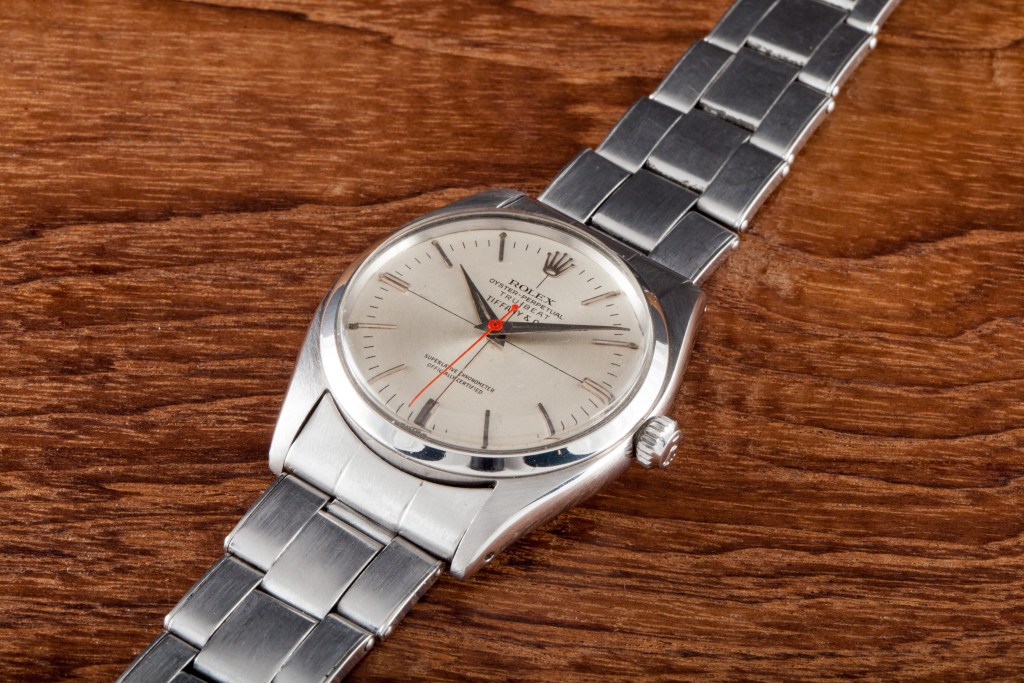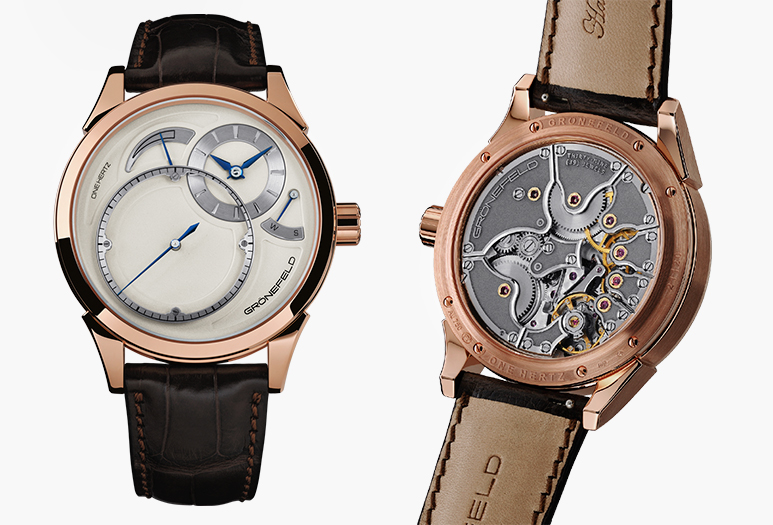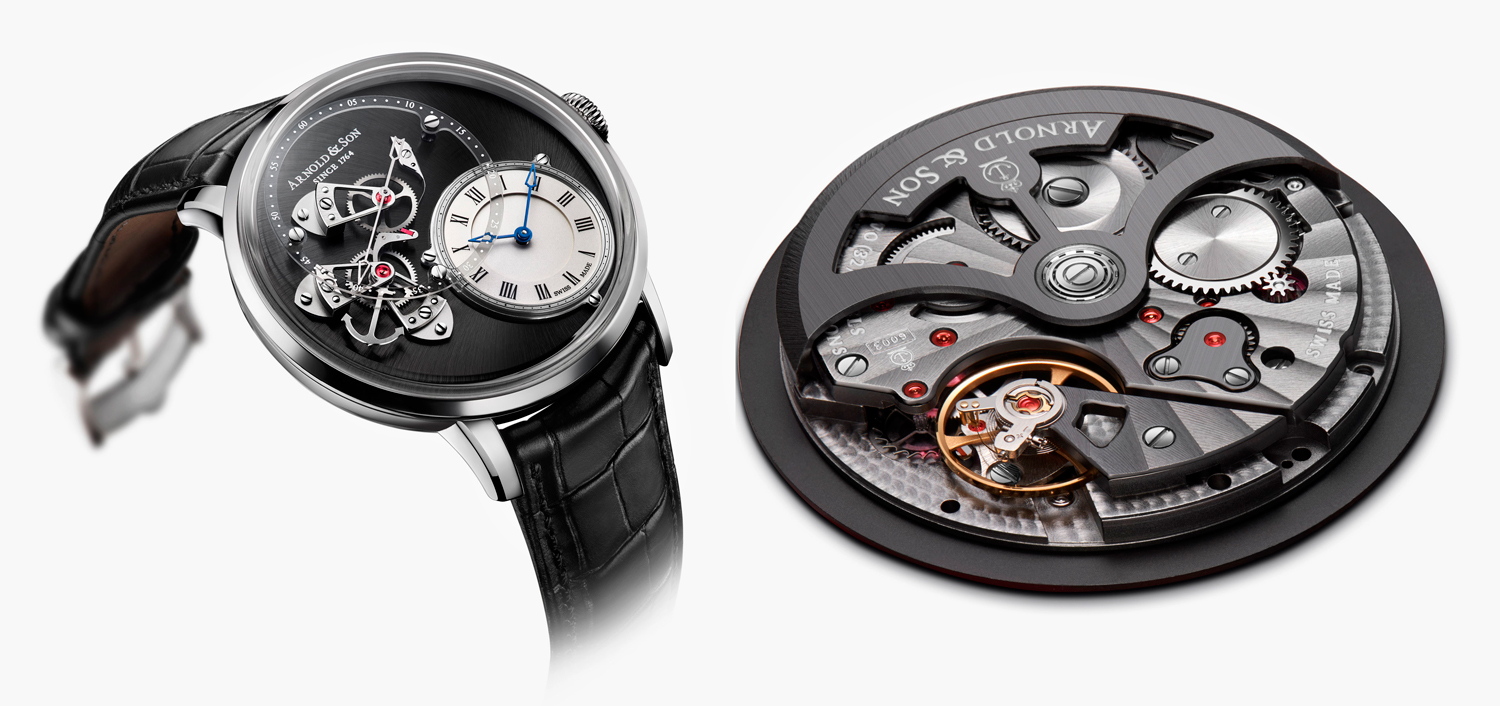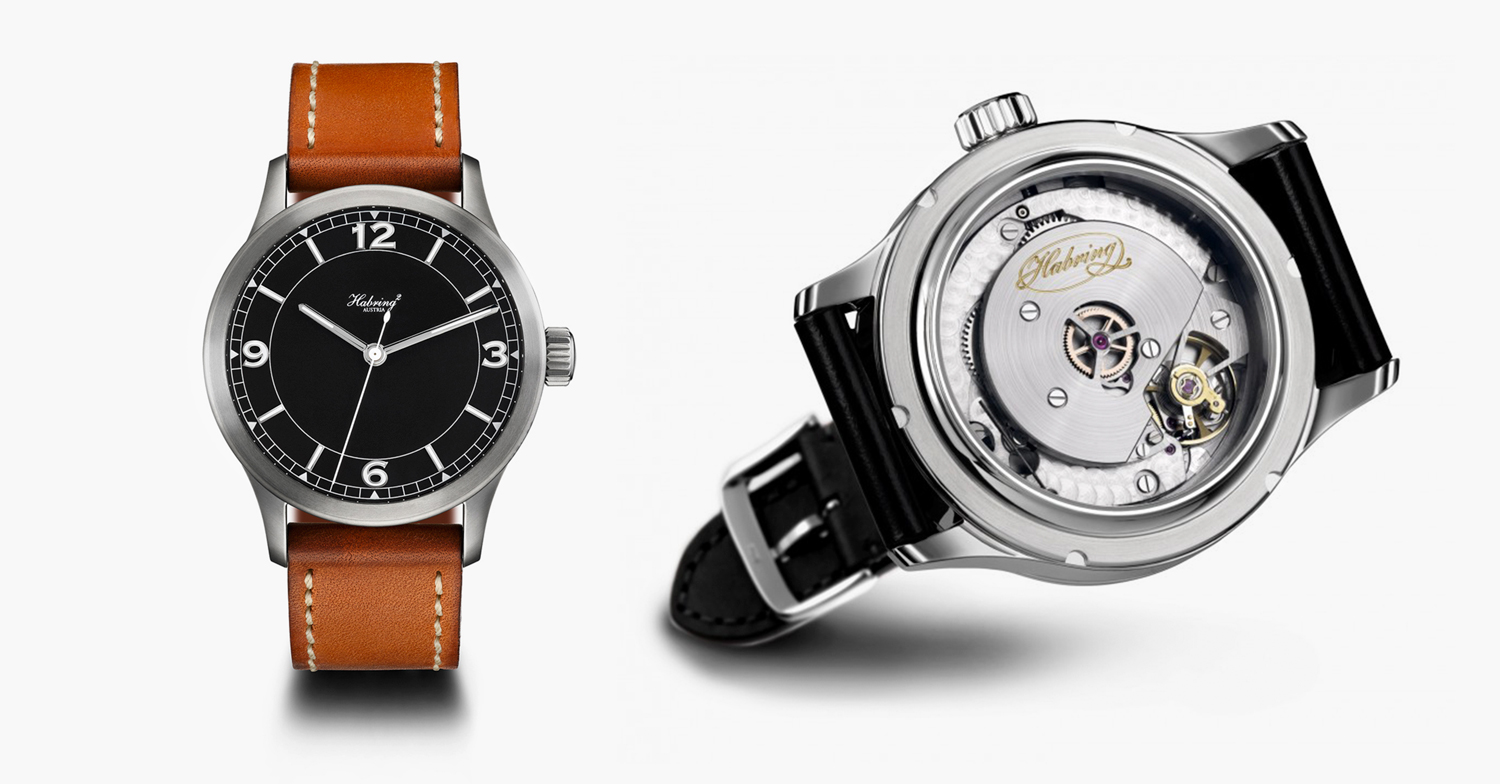In fact, even mechanical movements don’t sweep as smoothly as all that. Spring-powered second hands beat between 5-10 times a second depending on the movement. Yet, with the advent of everyday analogue quartz watches in the 1980s, most in the watch fraternity and sorority believe that proper mechanical watches (apparently) glide.
But there’s a mechanical complication that does exactly the opposite. It’s called a dead-beat seconds. It takes a mechanical movement with a conventional hairspring and balance and makes the second hand beat at 1Hz, or one beat a second. It’s one of those wonderful complications that looks so much simpler than it really is.

There’s a rather pleasing sense of history about a dead-beat movement. In the early eighteenth century when British watchmaker George Graham began using Townley’s dead beat escapement in his regulator clocks, the second hand would tick just once a second. This made it far simpler—and more accurate—to use it for setting other clocks.
Advertisement
By the 1950s and ‘60s, watchmakers had managed to miniaturise the whole mechanism. Omega’s cal. 372 Synchrobeat (if you ask nicely, you can see one in Swiss Time Service’s mini-museum in Essex) and Rolex’s ref. 6556 Tru-Beat carried the dead-beat torch. At least, they did for a short time. A dead-beat seconds revolution never really took off, so both are among the rarest of vintage Omegas and Rolexes.

In fact, they’re so rare that some watchmakers (back in the days when Rolex weren’t quite as sacred) replaced the cal. 1040 dead-beat movement components with standard parts from the easier-to-find cal. 1030. This goes some way to explaining why Aurel Bacs and the Phillips team sold a particularly original one for 37,500 CHF (around $38,000 or £30,000) in 2015. So if you find a shabby old Rolex in a thrift shop for a few quid with “Tru-Beat” on the dial, ticking like a quartz, give me a call and I’ll take it off your hands.

For such an apparently simple complication, the watchmaking behind dead-beat seconds is pretty boggling. For a quartz, it’s a (relatively) simple electronic process to have the crystal’s 32,768Hz converted into single second impulses driving a second hand through a stepper motor. For a mechanical movement’s 28,000bph (or 36,000bph if you’re lucky enough to own a Zenith El Primero), the apparent simplicity needs a whole lot more horological complexity sitting behind it.
There’s no single way to build a dead-seconds movement and different watchmakers prefer different routes.
For example, the inestimable Tim and Bart Grönefeld made their One Hertz 1912 by using two gear trains, with a mainspring and barrel driving the dead-beat seconds gear train mechanism. A second mainspring runs the going train for the hour and minute hands. All this work and effort for a limited edition of just 12 watches.

The dead-beat seconds is certainly the star of the Grönefeld show. It gets its own subdial—if a dial a third larger than the hour/minute dial can be a subdial—that’s raised and metalised. Metalised all apart from the transparent section of the seconds track that straddles the smaller dial. The second hand is fixed directly to a secondary escape wheel for the dead-beat seconds.
An alternative to the Brothers Grönefeld’s system is to use a single mainspring and a more complex gear train. This needs to convert the balance’s oscillations into single, one-second beats. It usually does it through using an intermediate wheel to transmit power to another wheel, usually with 60 teeth, controlling the second hand. Connecting the two with a rather complex pallet (all jeweled), means the power gets transmitted smoothly and precisely, or at least as precisely as a mechanical watch will manage.
One of the most beautiful examples of this is the Arnold & Son DSTB (Dial Side True Beat) with its A&S6003 movement. Like the One Hertz, this raises the seconds track on a seperate transparent sapphire chapter ring that overlaps the hour and minute dial. Hence the name and a thing of beauty indeed.

Don’t want all that fancy gear-train complexity and multiplicity of barrels? Fair enough, but it still won’t be simple. You could, as an alternative, use a star wheel as F.P.Journe have done in their Tourbillon Souverain. The star wheel connects, via a spring, to a separate dead-beat gear train. Once the spring has moved far enough around the teeth of the star wheel, the second hand moves, well, just once each second. Jaeger-LeCoultre have taken the same route in their Geophysic True Second watch.
Audemars Piguet headed on a different and rather mechanically elegant tack with their cal. 2905. They used a system with two independent seconds wheels on the same shaft, but the top one synchronized by a lever. The bottom wheel is detached and moves constantly, but the top wheel has delightfully named “wolf teeth’” and moves in single second pulses. It gives the impression of dead-beat seconds without actually needing a separate train of gears.
It’s not all haute horlogerie and Centurion Amex-wilting prices though. Austria’s Habring2 makes a (relatively) affordable dead-beat seconds watch, the Jumping Second Pilot. Richard Habring, the man behind the eponymous brand, has produced some serious work with IWC on split seconds chrono modules and ETA on movement modifications, so it’s not surprising he’s turned his attention to a dead-beat movement. The Jumping Second is based on a Valjoux 7750, and none the poorer for its relatively humble origins. If you fancy a Habring2, you’ll get a great deal of proper watchmaking for your $3,800—quite a lot less second hand, if you’ll pardon the pun.

A watch with dead-beat seconds may be the ultimate watchnerd complication. For a start, almost the only person who’ll spot it will be another watchnerd. It’ll look like you’re wearing a (rather smart) quartz. And only you’ll know the truth that you have a highly complex and refined piece of watchmaking on your wrist doing its best to look simple.
And just in case that watch tyro tries to persuade you that the only Rolex that ticks once every second is the Tru-Beat, you could always suggest he google “Oysterquartz.” Just for devilment.
πηγή: http://wornandwound.com/horological-iro ... t-seconds/" onclick="window.open(this.href);return false;


